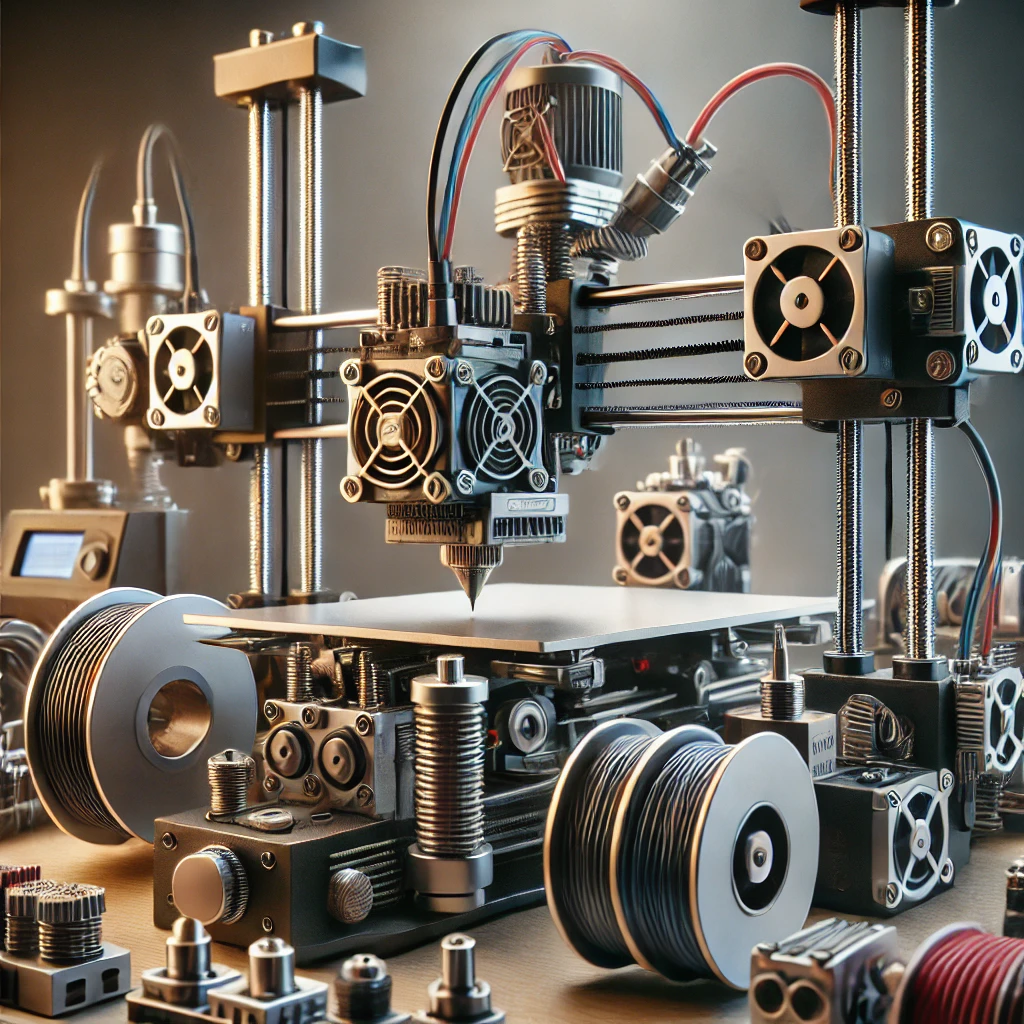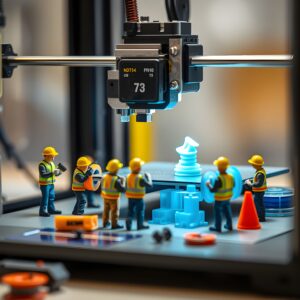Understanding the Different Types of 3D Printer Extruders

When it comes to 3D printing, the extruder is one of the most important components. It controls the flow of filament that builds your 3D model layer by layer. Understanding the different types of extruders is key to optimizing print quality and speed. In this article, we’ll explore the three main types of 3D printer extruders: direct drive, Bowden, and hybrid extruders.
1. Direct Drive Extruder
A direct drive extruder is mounted directly on the print head, meaning the motor responsible for pushing the filament is positioned close to the hot end. This setup offers several advantages:
-
Precision:
The shorter filament path allows for better control, making it easier to print flexible filaments like TPU. -
Minimal retraction issues:
Since the filament has less distance to travel, direct drive extruders experience fewer problems with retraction (the process of pulling the filament back to reduce stringing). -
Better for flexible materials:
This extruder type excels with flexible filaments due to its close proximity to the hot end.
However, direct drive extruders can be heavier, which might affect the print speed and increase vibrations on faster-moving printers.
2. Bowden Extruder
In a Bowden extruder setup, the extruder motor is mounted away from the print head, typically on the printer frame. The filament is pushed through a long tube (called a Bowden tube) before reaching the hot end. Key benefits of Bowden extruders include:
-
Speed:
With the motor mounted away from the print head, Bowden extruders reduce the overall weight of the print head, allowing for faster movement. -
Reduced vibrations:
This lightweight setup reduces vibrations during printing, improving overall accuracy. -
Great for rigid filaments:
Bowden extruders perform well with non-flexible filaments like PLA, ABS, and PETG.
On the downside, Bowden extruders may struggle with flexible filaments due to the long distance between the motor and the hot end, leading to less precise extrusion.
3. Hybrid Extruder
A hybrid extruder combines the best features of both direct drive and Bowden systems. Some hybrid setups use a Bowden tube for part of the filament’s journey and a direct drive mechanism near the hot end. This design aims to balance precision and speed:
-
Flexibility:
Hybrid extruders can handle a wide range of filaments, including both rigid and flexible types. -
Performance:
They offer a middle ground between the lightweight advantages of Bowden extruders and the precise control of direct drive systems. -
Customization:
Many hybrid systems allow for customization, so you can fine-tune the setup based on your printing needs.
While hybrid extruders provide versatility, they may not be as fast as Bowden extruders or as precise with flexible materials as direct drive systems.
Choosing the Right Extruder for Your 3D Printer
The right extruder for your 3D printer depends on the type of projects you’re working on and the materials you’re using. If you’re focused on precision and plan to work with flexible filaments, a direct drive extruder may be the best choice. If speed and reduced vibrations are your priority, especially with rigid materials, a Bowden extruder is a great option. For those who need versatility across multiple filament types, a hybrid extruder provides the best of both worlds.



